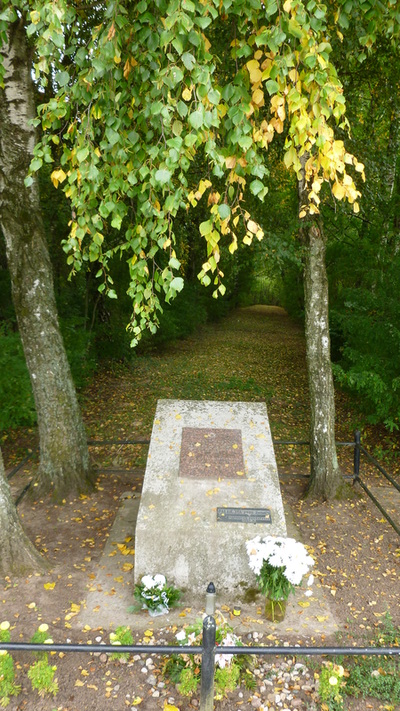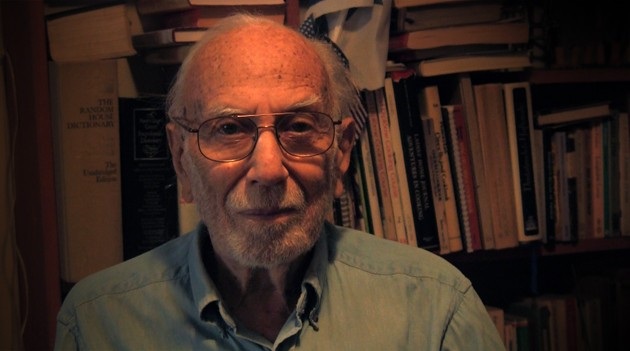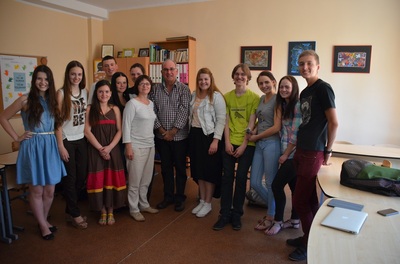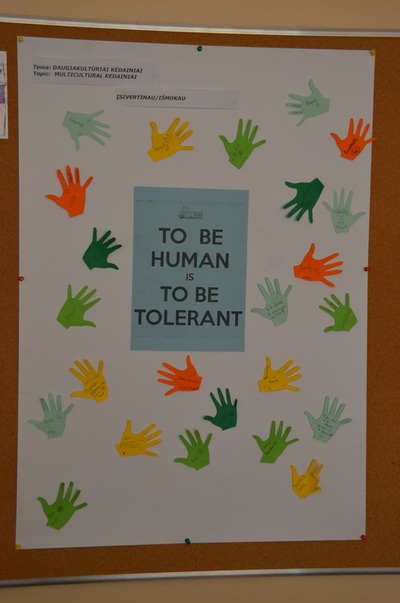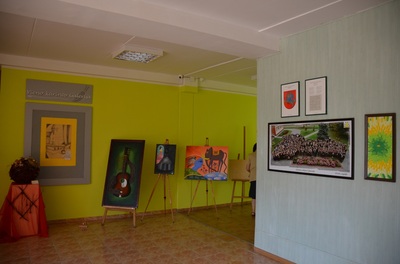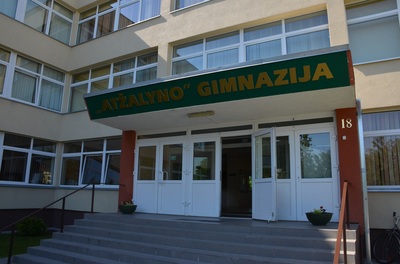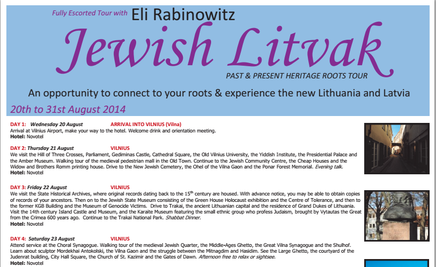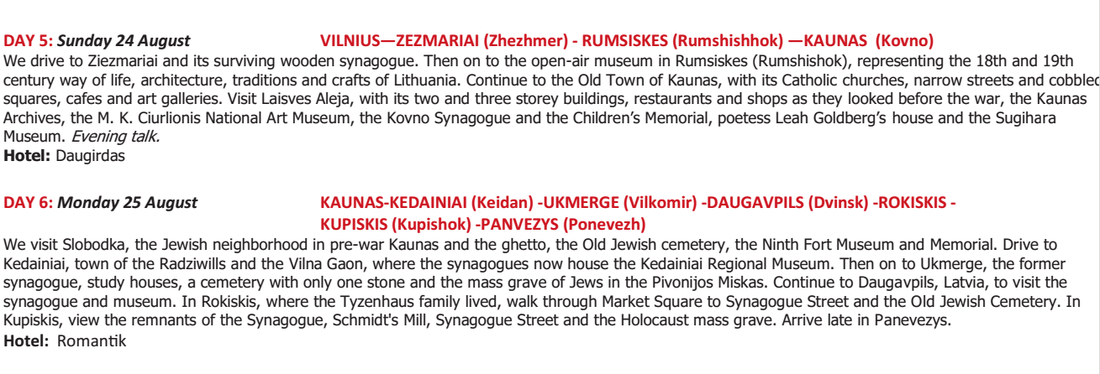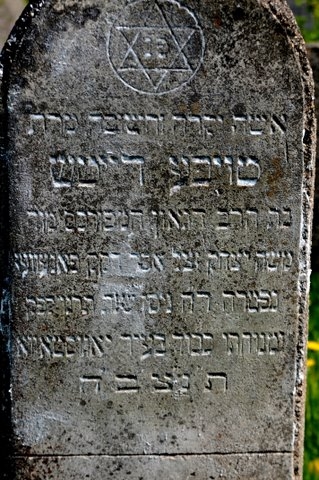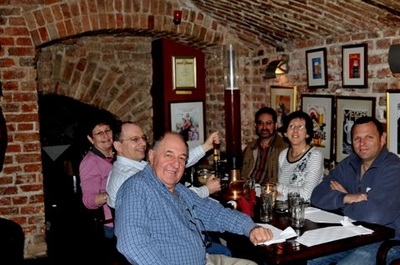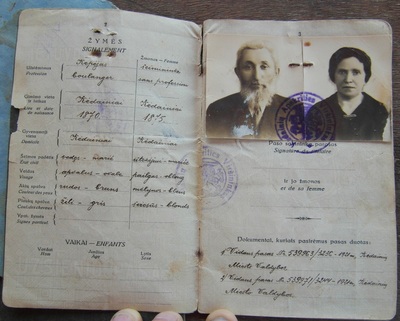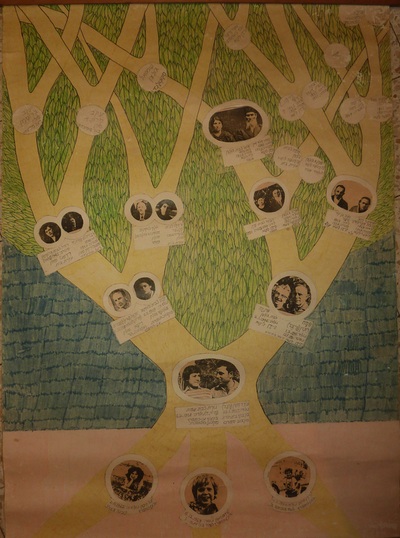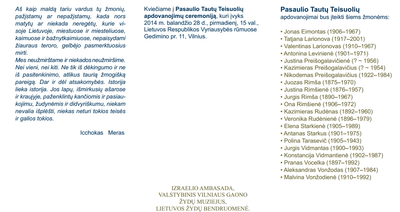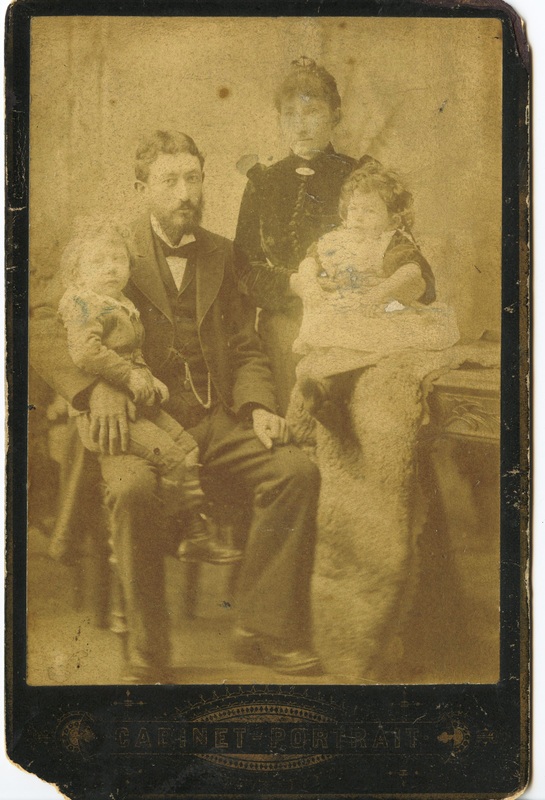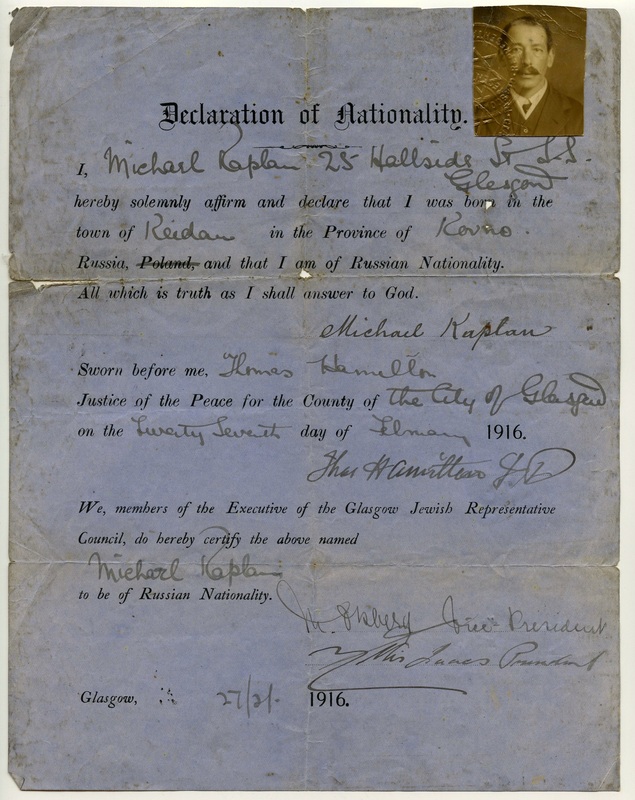Rooted in Kedainiai
Andrew Cassel

70 Years After Destruction, Memory of Lithuanian Community Lives in Diaspora
Descendents of Jews From Keidan Proudly Recall Roots
People from my grandfather’s hometown in Lithuania were known to be proud of their roots. It was said that if you asked a traveling Keidan Jew where he was from, he would puff up, thump his chest and say, “Me? I’m a Keidaner!” — so forcefully that outsiders gave them the Yiddish nickname “gribl in hartsn.” Which translates, with equal accuracy, as either “dent in the chest” or “hole in the heart.”
Read more: http://forward.com/articles/141461/-years-after-destruction-memory-of-lithuanian-co/#ixzz2wfC17edk
For more information about Keidan and its Jewish community, see the author’s website, http://home.comcast.net/~acassel/keidan/history/cassel_ch5-6.html#6
Descendents of Jews From Keidan Proudly Recall Roots
People from my grandfather’s hometown in Lithuania were known to be proud of their roots. It was said that if you asked a traveling Keidan Jew where he was from, he would puff up, thump his chest and say, “Me? I’m a Keidaner!” — so forcefully that outsiders gave them the Yiddish nickname “gribl in hartsn.” Which translates, with equal accuracy, as either “dent in the chest” or “hole in the heart.”
Read more: http://forward.com/articles/141461/-years-after-destruction-memory-of-lithuanian-co/#ixzz2wfC17edk
For more information about Keidan and its Jewish community, see the author’s website, http://home.comcast.net/~acassel/keidan/history/cassel_ch5-6.html#6
"Echoes from a world destroyed" (A Fragment) by B. Cassel
The shul was packed to the doorways. People from all the town's small prayer houses and minyans had come to hear the new cantor, David Finesinger, with his chorus. The oldtimers who had eaten first and come early most of them artisans and tradesmen had been enjoying the music all morning. But there was a big crowd as well from the bes midrash, the other chapels and even a few people from the kloyz, the town's second synagogue, who usually avoided the shulhof,the old synagogue yard, just as those who prayed regularly at the shul would never let themselves be caught inside the four walls of the kloyz.
But now people from all over Keidan had come by after their own morning services to hear a second kedusha from the new cantor, whose reputation had been spreading through town since right after the High Holidays. Read more
But now people from all over Keidan had come by after their own morning services to hear a second kedusha from the new cantor, whose reputation had been spreading through town since right after the High Holidays. Read more
Elliot Mamet
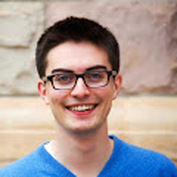
I was quite lucky to be able to see Kedainai and visit all the old sites. Much restoration work has been done in recent years... you can see this with the beautiful sculpture outside the Synogague and the moving Holocaust memorial. It was a very unique experience to be able to see where my family might have lived very long ago.
I have attached three photos: one of the synagogue in Kedainai, one of the Jewish cemetery there, and one finally of the Holocaust memorial on the outskirts of Kedainai. I took all of these photos when I visited Kedainai
with Regina in September of last year (2013). They are interesting to compare with the photographs posted on the website:
http://home.comcast.net/~acassel/keidan/keidan.html.
Reflections from Keidan Read more
I have uploaded the photos from my trip to the following website: http://www.flickr.com/photos/107501528@N08/
I have attached three photos: one of the synagogue in Kedainai, one of the Jewish cemetery there, and one finally of the Holocaust memorial on the outskirts of Kedainai. I took all of these photos when I visited Kedainai
with Regina in September of last year (2013). They are interesting to compare with the photographs posted on the website:
http://home.comcast.net/~acassel/keidan/keidan.html.
Reflections from Keidan Read more
I have uploaded the photos from my trip to the following website: http://www.flickr.com/photos/107501528@N08/
Howard Wolinsky
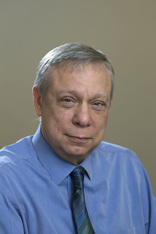
a journalism professor at Medill Graduate School at Northwestern University in Chicago and former science writer at Chicago Sun-Times.
Article for Ancestry magazine
When Tech Triggers Memory
Keeping memories alive is more than just framing a photo.
Article for Ancestry magazine
When Tech Triggers Memory
Keeping memories alive is more than just framing a photo.
Three generations
American recreates Keidaner grandfather's journey from Lithuania to U.S. via U.K.
Retracing My Grandfather’s Journey: Kovno to Hamburg, Through Hull to America
by Howard Wolinsky
by Howard Wolinsky
| henrywolinsky_avotaynu.pdf | |
| File Size: | 177 kb |
| File Type: | |
Martin (Moshe) Kagan
|
Kagan remembers Keidan as a place of intense cultural and political activity, with virtually nonstop lectures, debates and club activities.
Read more: http://forward.com/articles/141461/-years-after-destruction-memory-of-lithuanian-co/#ixzz38eVjkEb7 Read more about Martin Kagan |
The short history of Keidaner associations (1900 – 2014) by Aryeh Leonard Shcherbakov
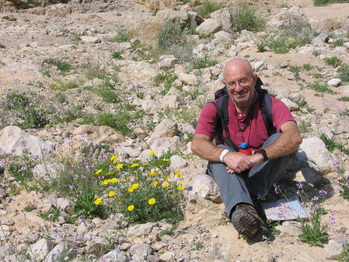
Eli Rabinowitz
Building bridges on PhotoPeach

Building bridges in Kedainiai
My third great grandfather, Avraham Shlomo Zalman Tsoref, a student of the Vilna Gaon, was born in Keidan in 1785. He left Kedainiai in 1811 for Palestine where he established the first ashkenazi community in Jerusalem.
My father Harry Rabinovitz
I also create webpages for JewishGen and I have one on Kedainiai - see:
http://kehilalinks.jewishgen.org/kedainiai
You can see my connection to Tzoref and his story in a video at:
http://kehilalinks.jewishgen.org/kedainiai/Zalman_Tzoref.html
I also write blogs of my travels:
see: elirab.me or specifically
http://elirab.me/2012/05/18/krakes-kedainiai-kaunas-17-may-2012/
My great grandfather came from Lithuania, we think Krakes, near Kedainiai. His name was Michel Avraham Herison.
My second great grandmother, Eidel Golda Kahana Shapira also came from Krakes
Perth, Australia
My third great grandfather, Avraham Shlomo Zalman Tsoref, a student of the Vilna Gaon, was born in Keidan in 1785. He left Kedainiai in 1811 for Palestine where he established the first ashkenazi community in Jerusalem.
My father Harry Rabinovitz
I also create webpages for JewishGen and I have one on Kedainiai - see:
http://kehilalinks.jewishgen.org/kedainiai
You can see my connection to Tzoref and his story in a video at:
http://kehilalinks.jewishgen.org/kedainiai/Zalman_Tzoref.html
I also write blogs of my travels:
see: elirab.me or specifically
http://elirab.me/2012/05/18/krakes-kedainiai-kaunas-17-may-2012/
My great grandfather came from Lithuania, we think Krakes, near Kedainiai. His name was Michel Avraham Herison.
My second great grandmother, Eidel Golda Kahana Shapira also came from Krakes
Perth, Australia
| latvialithuania_version_2.0_2.pdf | |
| File Size: | 1425 kb |
| File Type: | |
Cantor Harry Rabinowitz on PhotoPeach
Olga Zabludoff

Aharonas Poricas (Aaron Poritz) and his wife Elisheva with their children: Josifon, born 1921 (standing in the middle); Zahava-Golda, born 1924 (seated at right); and Ben-Ami, born 1926 (seated at left). Michle Zilberienne, Elisheva’s mother, is seated in the middle. Josifon was a medical student in Kaunas; his siblings were high school students in Kedainiai when this photo was taken in 1940. Aharonas was the principal of the Tarbut School in Keidan (a school for Hebrew education). The entire family was murdered on August 28, 1941, at the mass grave in Keidan.
Len Judes
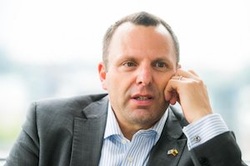
Tilly’s paternal grandmother (after who she was named) was Toiba (Bat HaGaon
Moshe Yitzchak) Revil. She died in 1896 and is buried in the old Jewish Cemetery in Keidan.
The tomb is marked as:
“K-23 Toiba DAITCH bat Gaon Moshe Yitzchak Nisan 1896 “.
Tilly I refer to is my late grandmother, Tilla (Tova) Judes nee Daitsh. Tilla was born in South Africa in 1919. Her father, Benjamin Daitsh was born in Keidan.
Bringing Lithuanian business to Israel
Moshe Yitzchak) Revil. She died in 1896 and is buried in the old Jewish Cemetery in Keidan.
The tomb is marked as:
“K-23 Toiba DAITCH bat Gaon Moshe Yitzchak Nisan 1896 “.
Tilly I refer to is my late grandmother, Tilla (Tova) Judes nee Daitsh. Tilla was born in South Africa in 1919. Her father, Benjamin Daitsh was born in Keidan.
Bringing Lithuanian business to Israel
Avi Lishower

Photo of Avi Lishower's family in Kaunas. Man with the beard was Mutuol Sragan who was born in Keidan. Man in hat was Hillel Sragan my grandfather who was born in Keidan.
Sharon Silber
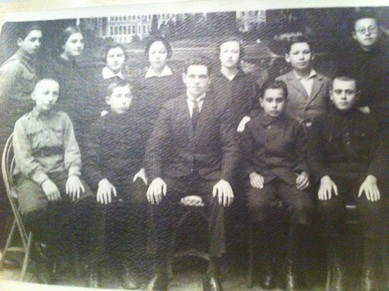
JOSEPH SILBER (1915 - 2007), A"H
My father Joseph Silber was born in 1915 in Keidan, Lithuania. His mother, Rosa Sternfeld, was a dressmaker from a family of tailors in Keidan Lithuania. She was the youngest of three sisters and very bright so she was sent by her father to study dress design in Paris where she met Joseph's father; Hirsh Silber was a violinist from Vienna who played for the silent movies. His parents met in the Jewish socialist circles of Paris and after his father served in the Austrian army during WWI and became a Russian prisoner of war. After the war, they remained permanently separated. Joseph was raised by his mother in Keidan where they lived with his aunt Mere and his uncle, Moshe Finkelstein, a lawyer and, according to my mom, a former mayor of Keidan.
Read more
My father Joseph Silber was born in 1915 in Keidan, Lithuania. His mother, Rosa Sternfeld, was a dressmaker from a family of tailors in Keidan Lithuania. She was the youngest of three sisters and very bright so she was sent by her father to study dress design in Paris where she met Joseph's father; Hirsh Silber was a violinist from Vienna who played for the silent movies. His parents met in the Jewish socialist circles of Paris and after his father served in the Austrian army during WWI and became a Russian prisoner of war. After the war, they remained permanently separated. Joseph was raised by his mother in Keidan where they lived with his aunt Mere and his uncle, Moshe Finkelstein, a lawyer and, according to my mom, a former mayor of Keidan.
Read more
| skmbt_c36414042512280.pdf | |
| File Size: | 655 kb |
| File Type: | |
| skmbt_c36414042512330.pdf | |
| File Size: | 540 kb |
| File Type: | |
AVSHI – BET ZERA
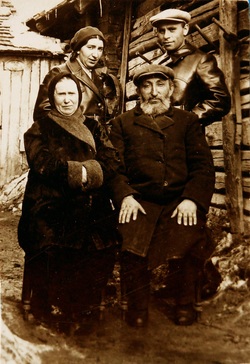
PART OF MY FAM. IN KEIDAN.
STANDING FROM LEFT: MY MOTHER SHEINA GOLTZIN, MY FATHER PESACH WEITZER.
SITTING “ “: GR. “ RIVKA NACHA GOLTZIN (FEIN), GR. FATHER ARIE SHECHNA GOLTZIN. (THE GOLTZIN CAME PROBABLY FROM EDINBORO SCOTLAND AS THERE CALLED=MAC GOLTZIN?!)
THE GOLTZIN HAD BAKERY AT HOME (BEIGEL MACHER)- 7 CHILDREN (4 EMIGRETE TO ISRAEL (IL) = SHEINA, YONA, SHMUEL & JAAKOV. - SARA & HER FAM. LOST IN THE HOLOCOST IN MINSK (BEL.), SHECHNA LOST IN SIBIRIA 1937 (“STALIN VICTIM”), GITLE MARRY DAVID PRUSSAK & THEY HAD 8 CHILDREN (4/4) – THEY + 2901 JEWISH LITUENIAN CITIZEN MURDER IN KEIDANI BY THE NAZIS & THEIR HELPER.
THIS PHOTO SNAP BEFOR 1932. MY FATHER BOUGHT AGFA CAMERA 6X9 1928 IN THE KAGANS SHOP. HE HAD A STSTIVE, SO, HE COULD JOINT INTO THE PIC.
AS USUALL IN THOSE TIME – THE GOLTZIN – HAD A COW, IN THE SAME BARAKE THEY LIVE, FOR MILK. IT WAS A BOY THAT TOOK EVERY MORNING THE COWS TO THE GRASS OUTSIDE THE SHTETLE (TOWN).
MY PARENT WAS NOT RILIGJOSE ANY MORE. THEY BROUGT THE GOLDTZIN 1936 – TO ISRAEL (“PALESTINE”) – TO THE KIBUTZ… THERE I CAN VISIT THEM …
I TRY TO ENCLOSE THEIR LIT. PASSPORT THEY USED BY THE WAY TO IL.
STANDING FROM LEFT: MY MOTHER SHEINA GOLTZIN, MY FATHER PESACH WEITZER.
SITTING “ “: GR. “ RIVKA NACHA GOLTZIN (FEIN), GR. FATHER ARIE SHECHNA GOLTZIN. (THE GOLTZIN CAME PROBABLY FROM EDINBORO SCOTLAND AS THERE CALLED=MAC GOLTZIN?!)
THE GOLTZIN HAD BAKERY AT HOME (BEIGEL MACHER)- 7 CHILDREN (4 EMIGRETE TO ISRAEL (IL) = SHEINA, YONA, SHMUEL & JAAKOV. - SARA & HER FAM. LOST IN THE HOLOCOST IN MINSK (BEL.), SHECHNA LOST IN SIBIRIA 1937 (“STALIN VICTIM”), GITLE MARRY DAVID PRUSSAK & THEY HAD 8 CHILDREN (4/4) – THEY + 2901 JEWISH LITUENIAN CITIZEN MURDER IN KEIDANI BY THE NAZIS & THEIR HELPER.
THIS PHOTO SNAP BEFOR 1932. MY FATHER BOUGHT AGFA CAMERA 6X9 1928 IN THE KAGANS SHOP. HE HAD A STSTIVE, SO, HE COULD JOINT INTO THE PIC.
AS USUALL IN THOSE TIME – THE GOLTZIN – HAD A COW, IN THE SAME BARAKE THEY LIVE, FOR MILK. IT WAS A BOY THAT TOOK EVERY MORNING THE COWS TO THE GRASS OUTSIDE THE SHTETLE (TOWN).
MY PARENT WAS NOT RILIGJOSE ANY MORE. THEY BROUGT THE GOLDTZIN 1936 – TO ISRAEL (“PALESTINE”) – TO THE KIBUTZ… THERE I CAN VISIT THEM …
I TRY TO ENCLOSE THEIR LIT. PASSPORT THEY USED BY THE WAY TO IL.
Alexandre Kaplan - visiting Kedainiai Atzalynas gymansium 29th April, 2014

My father Shimon Kaplan has spent a few years at Tarbut school. Shimon is born in 1922 in Keidan & at the age of 14 he moved to Kaunas. From August 1941 to November 1943 He was in Kaunas Ghetto. He was saved by Preisegolavicius family. My siter Anita is born in Kaunas July 31st 1941. She was saved by Larionov, Gembicki & Jainschig families.
Appril 28th will take place in Vilnius the Award Ceremony of righteous among the nations for Preisegolavicius Gembicki & Larionov families. The Award Ceremony for Jainshig & Gembicki family took place last October in Wiena in Austrian Parliament. I'll be in Vilnius & would go to Kedainiai on 29th.
Appril 28th will take place in Vilnius the Award Ceremony of righteous among the nations for Preisegolavicius Gembicki & Larionov families. The Award Ceremony for Jainshig & Gembicki family took place last October in Wiena in Austrian Parliament. I'll be in Vilnius & would go to Kedainiai on 29th.
„Išgelbėjęs vieną gyvybę, gelbėja visą pasaulį“
| 2014_teisuoliai_pakviet.pdf | |
| File Size: | 228 kb |
| File Type: | |
Harvey Kaplan - Glasgow, Scotland
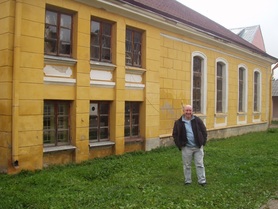
My great grandparents, Levi Kaplan and Leah Fayn, came from Jewish families in Ariogala and Josvainiai, but lived in Kedainiai for a time in the 1880s, before they came to Scotland and Glasgow, where their children were born.

Bernard Gerson Richards (1877-1971)
U.S- journalist, widely active in Jewish affairs. Richard was born in Keidan (Kedainiai), Lithuania, and was taken to the U.S. in 1886. He began his journalistic career as a reporter on the Boston Post, and wrote for several Boston and New York papers, as well as for Yiddish and other Jewish journals, including the American Hebrew and The New Palestine. He also edited the magazine New Era. From 1906 to 1911 Richards served as secretary of the Jewish Community of New York City, an organization designed to further the cause of Judaism, and in 1915 helped found the American Jewish Congress, of which he was executive director until 1932. At the end of World War I he was a member of the American Jewish delegation to the Versailles Peace Conference. He also founded the Jewish Information Bureau of Greater New York (1932) and the American Jewish Institute, N.Y. (1942) to further adult education. He was director of both these institutions. He was also a member of the Zionist Organization of America, and his revised edition of I. Cohen's The Zionist Movement (1946) included a supplementary chapter of his own on Zionism in the U.S. His other books were The Discourses of Keidansky (1903), and Organizing American Jewry (1947)- His papers are in the library of the Jewish Theological Seminary, N.Y. (Encyclopedia Judaica)
U.S- journalist, widely active in Jewish affairs. Richard was born in Keidan (Kedainiai), Lithuania, and was taken to the U.S. in 1886. He began his journalistic career as a reporter on the Boston Post, and wrote for several Boston and New York papers, as well as for Yiddish and other Jewish journals, including the American Hebrew and The New Palestine. He also edited the magazine New Era. From 1906 to 1911 Richards served as secretary of the Jewish Community of New York City, an organization designed to further the cause of Judaism, and in 1915 helped found the American Jewish Congress, of which he was executive director until 1932. At the end of World War I he was a member of the American Jewish delegation to the Versailles Peace Conference. He also founded the Jewish Information Bureau of Greater New York (1932) and the American Jewish Institute, N.Y. (1942) to further adult education. He was director of both these institutions. He was also a member of the Zionist Organization of America, and his revised edition of I. Cohen's The Zionist Movement (1946) included a supplementary chapter of his own on Zionism in the U.S. His other books were The Discourses of Keidansky (1903), and Organizing American Jewry (1947)- His papers are in the library of the Jewish Theological Seminary, N.Y. (Encyclopedia Judaica)
Myra Sklarew
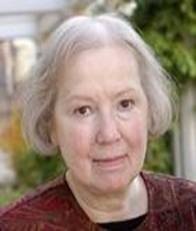
While we shelled beans with him
an interview of Myra Sklarew
by Ellen Cassedy
Myra Sklarew is the author of numerous books of poetry, including The Witness Trees, a powerful account of how she forged – and is still forging – a connection to her Jewish heritage in Lithuania. VilNews correspondent Ellen Cassedy spoke with Sklarew in Washington, D.C.
Myra, you have visited Lithuania twelve times in 18 years. What first drew you to the land of your ancestors?
In 1993, it occurred to me that with the end of the Soviet occupation, I could walk freely. I went with no knowledge. I didn’t know a soul and didn’t know the language. I just started walking.
an interview of Myra Sklarew
by Ellen Cassedy
Myra Sklarew is the author of numerous books of poetry, including The Witness Trees, a powerful account of how she forged – and is still forging – a connection to her Jewish heritage in Lithuania. VilNews correspondent Ellen Cassedy spoke with Sklarew in Washington, D.C.
Myra, you have visited Lithuania twelve times in 18 years. What first drew you to the land of your ancestors?
In 1993, it occurred to me that with the end of the Soviet occupation, I could walk freely. I went with no knowledge. I didn’t know a soul and didn’t know the language. I just started walking.
Let’s listen to how you put it in The Witness Trees, your book-length poem with a Yiddish translation by the noted late Yiddish poet David Wolpe (a member of your Lithuanian Jewish family who immigrated to South Africa):
I wanted to go there
by feel, to see if Lithuania would tell me
its secrets, to see if I would
recognize myself in Lithuania, to marry the myth
of who I am with the myth of place. To find more
than the signs of the dead. To find evidence
of the lives of those I have come from.
Your family lived in the Kedainiai region?
Yes – in the town of Kedainiai itself, and also in 15 different villages, including tiny hamlets that are not even on the map. I was most curious about these little villages.
In Datnuva, where my family was once more than half the town, an elderly woman called out to me – she cried out – as we drove in. She looked very intently at my face and told me I looked exactly like someone she once knew. It turned out she’d known my whole family. I visited with her every year and took my granddaughter to meet her and her family. Read more
I wanted to go there
by feel, to see if Lithuania would tell me
its secrets, to see if I would
recognize myself in Lithuania, to marry the myth
of who I am with the myth of place. To find more
than the signs of the dead. To find evidence
of the lives of those I have come from.
Your family lived in the Kedainiai region?
Yes – in the town of Kedainiai itself, and also in 15 different villages, including tiny hamlets that are not even on the map. I was most curious about these little villages.
In Datnuva, where my family was once more than half the town, an elderly woman called out to me – she cried out – as we drove in. She looked very intently at my face and told me I looked exactly like someone she once knew. It turned out she’d known my whole family. I visited with her every year and took my granddaughter to meet her and her family. Read more
David Wolpe

David Wolpe is an internationally acclaimed writer, poet, cultural activist,literary critic and scholar who was born in 1908(died 2006) in Keidan, Lithuania. He studied at the Tarbut-Gimnazie before immigrating to Israel in 1930. In 1937 he returned to Lithuania and during the war lived in the Slobodka Ghettobefore being sent to Dachau concentration camp.
Mr. Wolpe has published articles for the Yiddish magazines Undzer Veg, Dos Vort, Yiddishe Tsaytung, Bafrayung, Undzer Velt, Afrikaner Yiddish Tsaytung, Golden Keyt, Yiddish Kultur.
From 1955 through 1970 he was the editor of the magazine Dorem Afrike.
He is the author of A Volkn Un a Veg, Songs and Poems,A Vort in Zayn Tsayt, Iber Zayn Libervelt a book he coauthored with Abraham Sutzkever, and two additional volumes of poetry that he published in 1998 and 1999. He published a two volume autobiography, I and My World.
He translated the book The Witness Tree by Myra Sklarew into Yiddish.
In 1914, much of Keidan was destroyed by a terrible fire. David Wolpe, who was a small child at the time, later recreated this first-person memoir from the stories of his older brother, Isaac. It was published in a collection called "Homes, Dreams,Nightmares," Johannesburg, 1987.
Read more
A Home Consumed by FireA Memoir by David Wolpe
Mr. Wolpe has published articles for the Yiddish magazines Undzer Veg, Dos Vort, Yiddishe Tsaytung, Bafrayung, Undzer Velt, Afrikaner Yiddish Tsaytung, Golden Keyt, Yiddish Kultur.
From 1955 through 1970 he was the editor of the magazine Dorem Afrike.
He is the author of A Volkn Un a Veg, Songs and Poems,A Vort in Zayn Tsayt, Iber Zayn Libervelt a book he coauthored with Abraham Sutzkever, and two additional volumes of poetry that he published in 1998 and 1999. He published a two volume autobiography, I and My World.
He translated the book The Witness Tree by Myra Sklarew into Yiddish.
In 1914, much of Keidan was destroyed by a terrible fire. David Wolpe, who was a small child at the time, later recreated this first-person memoir from the stories of his older brother, Isaac. It was published in a collection called "Homes, Dreams,Nightmares," Johannesburg, 1987.
Read more
A Home Consumed by FireA Memoir by David Wolpe
A Journey to Lithuania
Visit by Leon Goldsmith
Our Visit To Kedainiai
My wife and I visited in mid-June. We met with Rimantas Zirgulis, the curator of the Jewish Museum. I had previously sent him a batch of family photos from Kedainiai. His vision and deeds are commendable. They are exhibited there now. He took us to the mass grave and showed us where the Jewish Cemetery is. I paid a visit to my great grandmother's grave, taking photos of her grave and of others, thinking that maybe someone might recognize the names. The images are all keyworded and titled, so you can get some more information. We also visited the site of my great grandfather's hotel/guesthouse on Josvainiu street.
The last picture is of Judah Ronder whose brother, Chaim, witnessed the massacre. Judah lives now in Kaunas and was the person who took care of the Jewish Cemetery in Kedainiai.
Slide show
My wife and I visited in mid-June. We met with Rimantas Zirgulis, the curator of the Jewish Museum. I had previously sent him a batch of family photos from Kedainiai. His vision and deeds are commendable. They are exhibited there now. He took us to the mass grave and showed us where the Jewish Cemetery is. I paid a visit to my great grandmother's grave, taking photos of her grave and of others, thinking that maybe someone might recognize the names. The images are all keyworded and titled, so you can get some more information. We also visited the site of my great grandfather's hotel/guesthouse on Josvainiu street.
The last picture is of Judah Ronder whose brother, Chaim, witnessed the massacre. Judah lives now in Kaunas and was the person who took care of the Jewish Cemetery in Kedainiai.
Slide show



